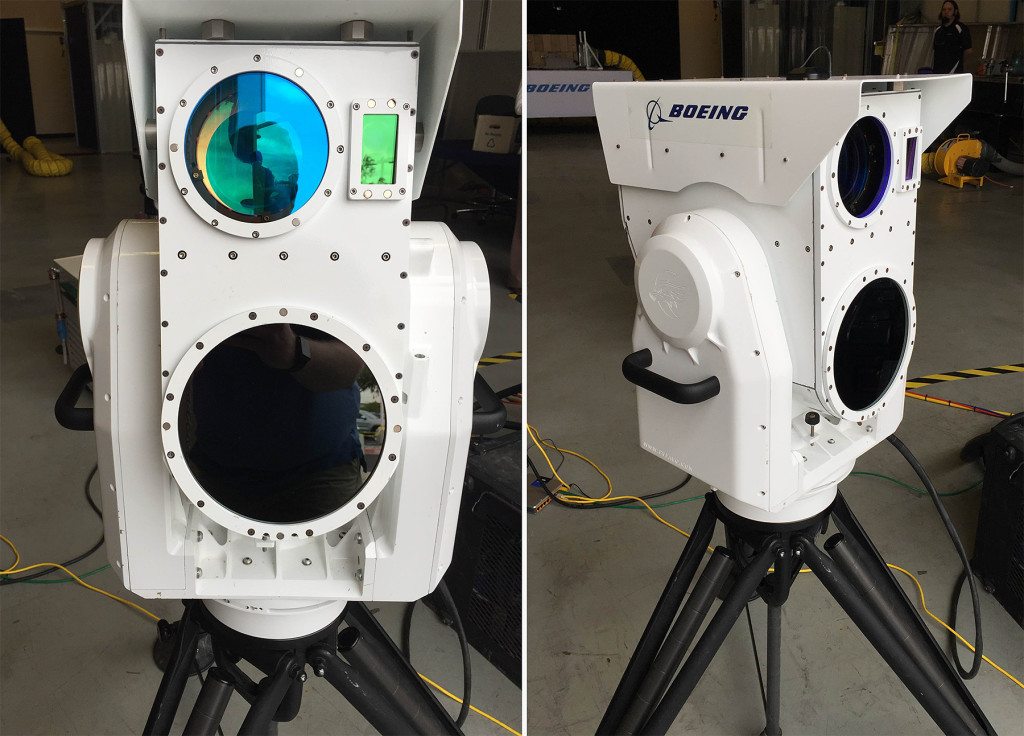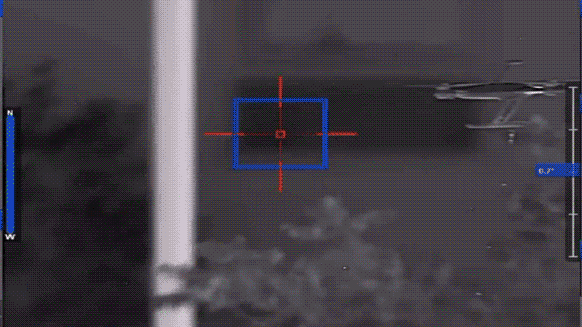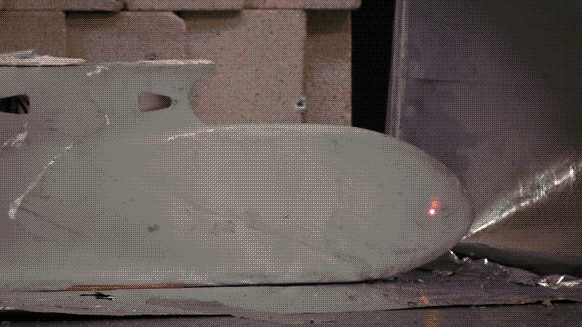
For a couple hundred bucks, anyone can take to the sky and film the world from an entirely new vantage. It’s no denying that drones are excellent consumer electronics that are changing the way we shoot film and photography, but unfortunately, it’s the “anyone” aspect that’s also causing tons of mischief. Nearly every month, airports report UAVs coming dangerously close to airplanes. And let us not forget the how drones disrupted wildland firefighters from doing their job in California, or how that government aide crashed his drone onto the White House’s lawn during a night of drunken revelry. This is about to change: Boeing is testing its drone busting laser canon, capable of transferring expensive toys into expensive piles of wreckage.
Currently being tested in a New Mexico industrial park, the laser cannon will use auto-tracking to blast the devices straight out of the sky in an anti-climactic show of invisible infrared laser; unfortunately, there’s no audible pew pewing. Fired at full power, the two-kilowatt infrared beam can quickly puncture the UAV’s composite shell, setting it ablaze in only two seconds. There’s no explosion or anything dramatic, likening the process more to burning ants than blowing up robots.

Also, unlike most anti-drone laser cannons, Boeing’s rendition is not be truck mounted; instead, the compact device can fit in four suitcase-sized boxes, allowing technicians to quickly deploy it in perimeter around sensitive areas. Since laser travels at the speed of light, there’s no need to lead the target, meaning, the laser can be fired precisely at the target it aims to hit. The only real limitation is the speed of the gimbal that permits the laser and camera to aim across all six axes.
While aiming is primarily automatic, a human operator must first bring the crosshair in the relative proximity of the drone using a standard Xbox 360 controller and a laptop outfitted with custom targeting the system. Why an Xbox controller was selected in place of a mouse is beyond me, as everyone knows the precision is the wrist controlled mouse far outweigh that’s of a thumb-controlled joystick.

The system’s cost is currently unknown, but David DeYoung, director of Boeing Laser & Electro-Optical Systems, claims it “this represents a low-cost way to deal with the threat.” In other words, the hardware is good to last for a long time, requiring that customers only pay for the electricity to run it. The cost-per-shot is allegedly very low.
The current iteration of the turret is meant to be used from a stationary position, but with it can be altered for use atop a moving vehicle or ship with minimal upgrades. Boeing hopes to deploy the system within a fear years as a supplement to traditional missile defense.
Source: Wired.com
Advertisement
Learn more about Electronic Products Magazine





